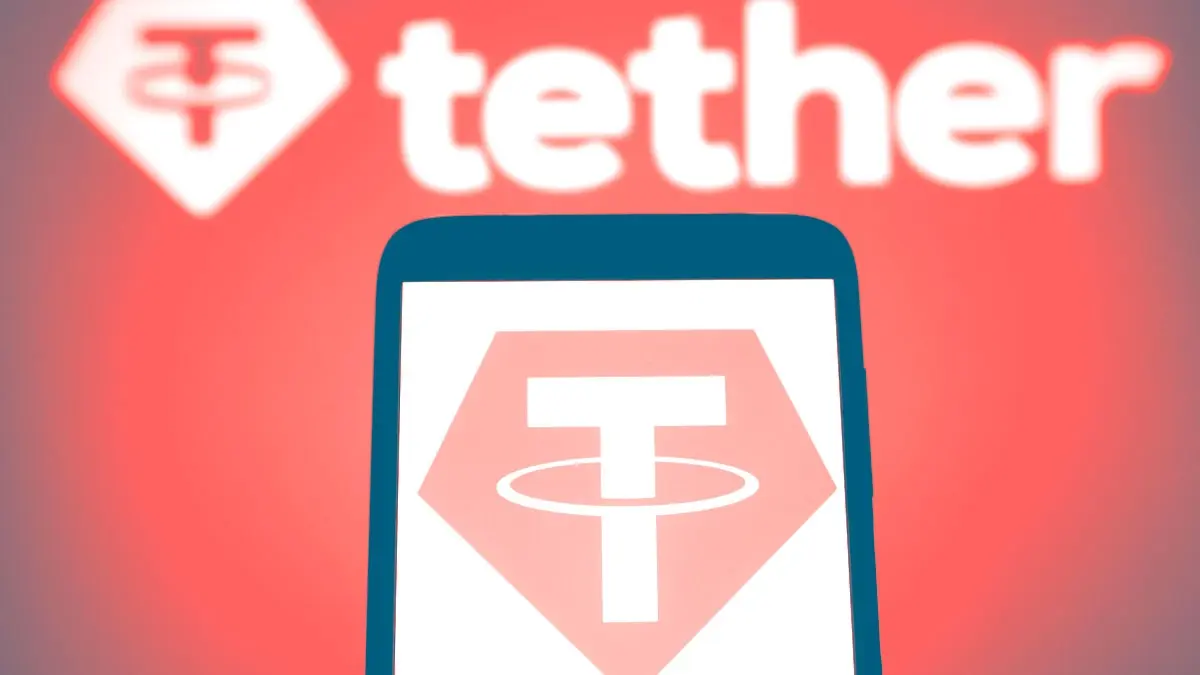We’ve covered quite a lot of on-chain perpetual protocols, and 90% of the time, they face similar challenges such as high slippage, poor liquidity, slow transaction execution, oracle mismatch, capital inefficiency as well as the complexities of narrowing the user experience gap between centralized exchanges (CEXs) and decentralized alternatives (DEXs), and so forth.
However, what’s interesting is that the protocol at the center of today’s discourse (Perennial) has already put many of the issues to bed since February 2023 and moved on to a lot more interesting things. If you are tempted to ask what the Perennial approach to solving them (challenges) is, then grab a seat, and let’s give you a quick rundown before we get into the interesting bits.

Perennial as a perpetual primitive redesigned for DeFi:
Before looking into what should have our attention in Perennial, it’s important to state that the first version of the protocol achieved some incredible feats. The protocol quickly saw meaningful attention and volume, crossing over a billion dollars in volume in just 3 months, receiving third-party integrations from the likes of Siren; an options protocol, Cryptex finance, and Liqui, and attracting investment from some of the top funds in the space, including Polychain, Variant, and Archetype
This goes to show that Perennial’s approach to On-chain derivatives is one to explore and not just shove aside. Perennial adopts a ground-up approach to building a decentralized derivatives protocol, which prioritizes first principles.
The best way to look at Perennial isn’t just oracle-based perps protocol — but also as a modular infrastructure for derivative markets and a liquidity layer. Perennial is built with a hyperefficient core and multiple layers built on top as extensions and higher-level protocols, thereby allowing for use beyond taking opposing positions (long, short, exotic) in the markets.
Long story short, this isn’t your typical Perp deriv protocol. It’s useful to traders, liquidity providers, and developers wishing to create innovative protocols on top of a thoughtfully designed infrastructure.
So, how does Perennial work at the base?
Perennial operates as a peer-to-pool derivative Automated Market Maker (AMM), utilizing a two-sided market structure. When a trader (Taker) opens a position, it matches with an opposing position funded by liquidity providers (LPs or Makers). The pooled liquidity covers the net exposure between positions, and LPs contribute liquidity for fees earned. Perennial supports leveraged positions on both sides, isolates markets and risks, settles trades in fiat, ensures zero slippage, and determines funding rates based on pool utilization.
The protocol charges settlement fees, Taker Price Impact, and maker fees, distributing fees among Makers, the Perennial treasury, and product owners' treasuries, sometimes sharing with Takers. Interest rates incentivize makers, covering delta-neutral capital costs based on a utilization curve. Perennial, functioning as an AMM with leverage and a liquidation system, imposes liquidation fees when collateral falls below the maintenance requirement. There’s a more vivid explanation of the working parts of the Perennial protocol, so feel free to explore more through the project’s documentation.
Perennial, what’s new?
Perennial launched its second version of the protocol in October 2023. The new version of the protocol focused on eliminating the core pain points of V1 (from user feedback) & enabling new & more efficient market structures to exist.

A few changes were made, such as:
- The introduction of Pyth as an oracle provider, thanks to their low latency performance. This integration is in line with Perennial’s agnostic approach to Oracles and, in the future, will support many low-latency Oracles.
- Improved market risk management mechanisms, including the introduction of price impact & a proportional integral derivative (PID) based dynamic funding rate, both of which help to keep markets balanced (minimizing LP risk).
- Increased capital efficiency via changes in how the market operates — native netting of longs & shorts, requiring makers only to cover the difference, meaning that Perennial can rival the liquidity & UX of its peers with only a fraction of the TVL.

Other notable changes are:
- Additional risk management mechanisms through third-party partnerships.
- An introduction of a multi-asset vault for liquidity providers or makers.
- Support for extensions, including more complex order types for advanced traders.
- An improved user experience linear to the founding principles of meeting the demands of simple and advanced users of the protocol.
All of these new additions largely benefit both sides of the protocol, but there’s more, and I think this part is worth your attention.
Perennial has introduced incentives and a few new changes. It’s also hinted at incredible additions to the services rendered to users. Let’s examine a few of them:
A liquidity layer + custom markets
The vision for Perennial is to be the go-to infrastructure for building customized derivatives markets upon a shared liquidity layer. With v2, Perennial is best positioned to achieve this thanks to a suite of improvements:
Markets are also fully customizable, something only perennial offers — choose your own payoff, fee structure, market economics, risk manager, etc. Any perp that you can think of can be launched tomorrow. But that’s not all.
The protocol’s (Perennial) liquidity is designed to be hyperefficient & modular throughout the ecosystem, supporting both pro & retail LPs and enabling many forms of LPing to coexist within one protocol (rather than being silo’ed to one single pool).
Additionally, Perennial as the choice base liquidity layer for devs building other derivative protocols is an easy decision to make, especially for developers prioritizing ease of integration over any other metric. In this regard, Perennial is designed with a clean code, allowing devs to easily integrate a frontend, bootstrap new markets, integrate the contracts, and/or build an operator. If you want to get started, feel free to check the documentation for all the info you need. No other protocol gives this much flexibility & support needed to bootstrap novel markets.
But there’s more. Superior tech is not all that Perennial offers; they also have an incentive program to satiate the appetite of you degens.
Reintroduction of Power Perp
In addition to exotic squared perps and normal assets, the Perennial team is bringing back Power Perps — a DeFi native equivalent to leveraged options trading. The decision to bring Power Perps back in business isn’t surprising as Perennial’s modular framework is designed for such a market, given that it is relatively easy to compose a price feed with any payoff. Power Perps on Perennial will begin with micro-BTC², which tracks the price of BTC normalized by a factor of 1000.
Introducing Power Perps opens the door to more trading activity that’ll potentially attract skilled options traders. Beyond option trading, Power Perps can be used for liquidation-free leveraged trading as it combine three properties when trading with full margin: an asymmetric upside, a capped downside, and no liquidations. Power Perps can also serve as a hedge against risks associated with LP positions.
INCENTIVES FOR TRADING ACTIVITY
Perennial has since kicked off ARB rewards for trading activity on the protocol, having received a grant of 750k ARB tokens. The 12-week incentive period is on its 7th week, and both sides of the market can benefit.
For Takers, rewards are shared with those who actively trade & maintain their positions on any Perennial markets throughout the week. While Makers earn a share of the rewards every week, they are expected to provide liquidity to Perennial vaults and/or directly to the protocol as a pro maker. It’s important to state that when it comes to Maker rewards, vaults/markets will have uneven levels of rewards.
Referral program
To attract more users to the platform, the protocol has launched a referral program divided into two tiers. Perennial affiliates in the form of users and partners will be able to share their custom referral links with friends and earn a share of fees from the trades of their referees. On the other hand, traders are encouraged to refer users to the platform in exchange for discounted fees. To find out more about the referral program, click here.
The road ahead
The job’s not done for Perennial; there are more important changes and additions ahead, all of which are of benefit to traders on the platform.
Despite launching a referral program, the team will be introducing a more sophisticated ambassadorship program and a points program to ramp up the protocol's growth, so it is something to watch out for here.
Additionally, newer versions of the Perennial protocol will be introduced, starting from v2.1, released last week. With these new versions down the line, some of the disclosed features we are expected to see on Perennial are full support for closable markets (currencies, commodities, etc.),
Vault efficiency improvements (5-7 markets per vault), price impact formula refactor (easier bootstrapping of new markets), gas improvements. In v2.2 (coming in Q1), Perennial will support NFT markets (new Oracle integration - to be announced soon), Chainlink data stream integration, improved market balancing mechanics, non-linear price impact curve, and much more.
In a more lengthy time frame, we will potentially get to see the integration of new Perennial-native oracles, Novel Pro LP tooling, Next-gen Passive liquidity infrastructure (through partnerships or directly built by Perennial), and new market bootstrapping infrastructure.
The future is multi-chain, and Perennial recognizes this. The team is and will continue exploring possible deployments to other L2, especially Base and Blast.
Closing thoughts
Competing and succeeding as a protocol in the highly competitive world of on-chain derivatives takes intentionality. At the moment, Perennial seems to be an underdog in terms of TVL, but things are changing rapidly. With an incentive program and newer innovative working parts to the protocol, there’s no doubt that in no time, the protocol will measure up to the competition.
From a technical standpoint, Perennial’s ground-up approach to on-chain derivatives sets it apart from the sticker to a bucket full of water protocols relying on emissions and airdrop baiting to posture like the real deal.
The protocol is tokenless, so feel free to explore and experiment with their advanced leverage LP with an impressive UI. Additionally, there's no harm in engaging by trading the available derivative assets on the protocol.







%20(1).webp)



.webp)



























































%202.webp)


.webp)

.webp)
.webp)
.webp)



.webp)












%20the%20Next%20Big%20Unlock%20in%20AI.webp)













.webp)
.webp)

.webp)
.webp)
.webp)


.webp)
.webp)










.webp)


.webp)









.webp)







.webp)




.webp)






.webp)






.webp)

















.webp)

.webp)
.webp)

.webp)
















.webp)

.webp)


.webp)








.webp)





.webp)












.webp)




